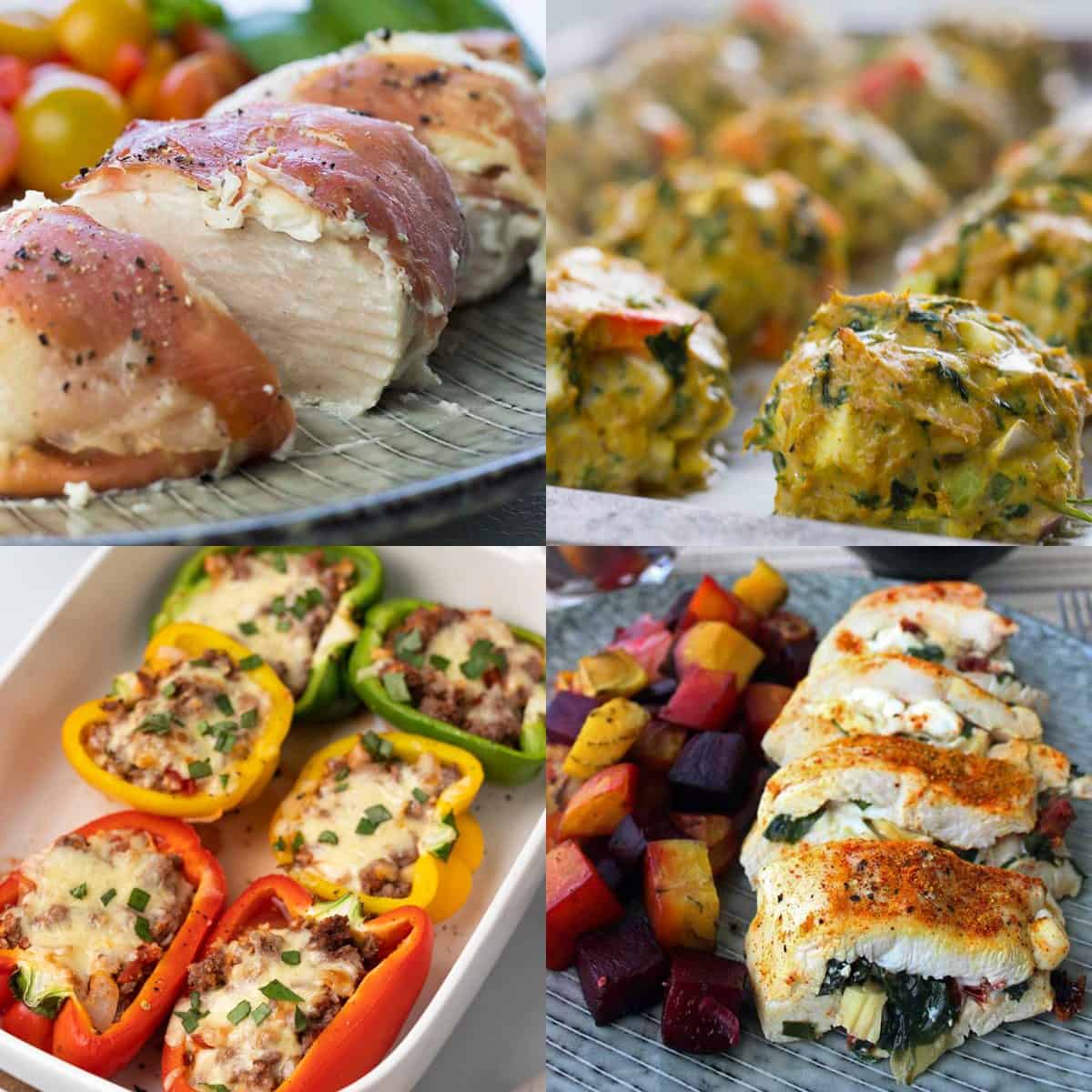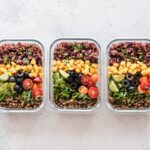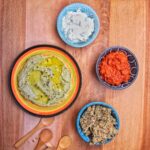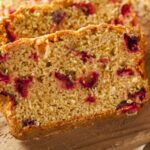Discover a world of delicious and healthy eating, even with diabetes! This guide unveils the secrets to crafting vibrant, flavorful meals that won’t compromise your health. Learn how to manage carbohydrates effectively, harness the power of herbs and spices, and create stunning dishes that are both satisfying and diabetes-friendly. Prepare to embark on a culinary journey that redefines what delicious and healthy can be.
We’ll explore the fundamental principles of diabetic-friendly cooking, from understanding glycemic index and portion control to mastering healthy substitutions for common high-sugar ingredients. Through detailed recipes, insightful tips, and visually appealing presentations, you’ll gain the confidence and knowledge to create meals that nourish your body and delight your taste buds. Get ready to transform your approach to diabetes management through the joy of cooking!
Understanding Diabetic-Friendly Cooking Principles
Cooking for diabetes doesn’t mean sacrificing flavor; it’s about making informed choices to manage blood sugar levels effectively. This involves understanding key nutritional considerations and employing smart substitutions to create delicious and healthy meals. By focusing on portion control, glycemic index awareness, and incorporating nutrient-rich ingredients, you can enjoy a diverse and satisfying diet while supporting your overall well-being.
Carbohydrate Control, Glycemic Index, and Portion Sizes
Managing carbohydrate intake is paramount in diabetes management. Carbohydrates break down into glucose, impacting blood sugar levels. The glycemic index (GI) measures how quickly a carbohydrate-containing food raises blood glucose. Foods with a low GI cause a slower, more gradual rise, preventing sharp spikes. Portion control ensures you consume carbohydrates within your daily recommended limits, preventing blood sugar fluctuations. Visualize a balanced plate: half filled with non-starchy vegetables, a quarter with lean protein, and a quarter with a controlled portion of carbohydrates like whole grains or starchy vegetables.
Healthy Substitutions for High-Sugar Ingredients
Many common ingredients are surprisingly high in sugar. Substituting them with healthier alternatives can significantly reduce your sugar intake without compromising taste. For example, replace refined white sugar with natural sweeteners like stevia or erythritol, both of which have minimal impact on blood sugar. Instead of using sugary syrups, consider using unsweetened applesauce or mashed bananas for added moisture and sweetness in baked goods. When baking, you can often reduce the amount of sugar needed by increasing the spices or adding citrus zest. The vibrant zest of a lemon or lime can brighten up a dish significantly.
Benefits of Lean Proteins, Healthy Fats, and Fiber-Rich Foods
Incorporating lean proteins, healthy fats, and fiber-rich foods is crucial for effective diabetes management. Lean proteins, such as chicken breast, fish, beans, and lentils, help maintain satiety, preventing overeating and stabilizing blood sugar levels. Healthy fats, like those found in avocados, nuts, and olive oil, contribute to overall health and help regulate blood sugar. Fiber-rich foods, including vegetables, fruits, and whole grains, slow down digestion, leading to a gradual release of glucose into the bloodstream. Imagine a vibrant salad bursting with colorful vegetables, a sprinkle of nuts, and a drizzle of olive oil – a delicious and beneficial combination.
Glycemic Index of Common Foods
The following table provides a comparison of the glycemic index of various common foods. Remember that the GI can vary based on factors like cooking methods and food processing.
| Food | Glycemic Index (GI) | Serving Size | Notes |
|---|---|---|---|
| White Bread | 70-75 | 1 slice | High GI, refined carbohydrate |
| Brown Rice | 50-60 | 1/2 cup cooked | Lower GI than white rice |
| Banana | 51-62 | 1 medium | GI varies depending on ripeness |
| Broccoli | 10 | 1 cup cooked | Very low GI, excellent source of fiber |
| Oatmeal (rolled) | 55-70 | 1/2 cup cooked | GI can vary depending on processing |
| Sweet Potato | 44-54 | 1 medium | Lower GI than white potato |
Flavorful Recipe Ideas for Diabetes-Friendly Meals

Delicious and healthy eating doesn’t have to be a compromise. These recipes demonstrate how to create vibrant, flavorful meals suitable for managing diabetes, without sacrificing taste or texture. We focus on techniques that maximize natural sweetness and savory notes, minimizing added sugars and unhealthy fats.
Breakfast: Cinnamon-Spiced Berry Quinoa Bowl
This breakfast bowl offers a delightful balance of sweetness from berries, warmth from cinnamon, and a satisfying protein boost from quinoa. The recipe emphasizes whole grains and naturally sweet fruits, avoiding refined sugars.
Ingredients: 1/2 cup cooked quinoa, 1/2 cup mixed berries (blueberries, raspberries, strawberries), 1/4 teaspoon cinnamon, 1 tablespoon chopped walnuts, 1/4 cup unsweetened almond milk (or other milk alternative).
Instructions:
- Combine cooked quinoa, berries, and cinnamon in a bowl.
- Top with chopped walnuts.
- Drizzle with unsweetened almond milk.
- Enjoy immediately for a nutritious and flavorful start to your day.
Recipe Card Design: The recipe card features a rustic, warm background with a photograph of the finished bowl. The image showcases the vibrant colors of the berries against the creamy quinoa, with the walnuts adding texture and visual appeal. The text uses a simple, easy-to-read serif font in a dark brown color, contrasting beautifully against the light background. The title, “Cinnamon-Spiced Berry Quinoa Bowl,” is prominently displayed at the top in a slightly larger font size.
Lunch: Mediterranean Chickpea Salad Sandwich
This light and refreshing lunch option is packed with protein and fiber, keeping you full and satisfied without blood sugar spikes. The emphasis is on healthy fats from olive oil and the natural flavors of Mediterranean herbs and vegetables.
Ingredients: 1 can chickpeas (drained and rinsed), 1/4 cup chopped cucumber, 1/4 cup chopped red onion, 2 tablespoons chopped Kalamata olives, 1 tablespoon olive oil, 1 tablespoon lemon juice, 1 teaspoon dried oregano, salt and pepper to taste, 2 slices whole-wheat bread.
Instructions:
- Mash chickpeas slightly with a fork.
- Combine mashed chickpeas, cucumber, red onion, olives, olive oil, lemon juice, oregano, salt, and pepper in a bowl.
- Mix well to combine.
- Spread the chickpea salad evenly on two slices of whole-wheat bread.
- Enjoy a flavorful and healthy lunch.
Recipe Card Design: The recipe card uses a bright, sunny yellow background, evoking the Mediterranean sun. The photograph shows a close-up of the sandwich, highlighting the vibrant colors of the ingredients. The text is in a clean, sans-serif font in a deep green color, providing a contrast against the yellow background. The title, “Mediterranean Chickpea Salad Sandwich,” is written in a stylish script font at the top.
Dinner: Baked Salmon with Roasted Asparagus and Quinoa
This dinner recipe offers a delicious combination of lean protein, healthy fats, and fiber-rich vegetables. Baking the salmon enhances its flavor without adding excess fat, while roasting the asparagus brings out its natural sweetness.
Ingredients: 1 salmon fillet (about 6 ounces), 1 bunch asparagus, 1/2 cup cooked quinoa, 1 tablespoon olive oil, 1/2 teaspoon lemon zest, salt and pepper to taste.
Instructions:
- Preheat oven to 400°F (200°C).
- Toss asparagus with 1/2 tablespoon olive oil, salt, and pepper.
- Place asparagus on a baking sheet.
- Place salmon fillet on the same baking sheet.
- Drizzle salmon with remaining olive oil and lemon zest.
- Season salmon with salt and pepper.
- Bake for 12-15 minutes, or until salmon is cooked through and asparagus is tender.
- Serve salmon and asparagus over cooked quinoa.
Recipe Card Design: The recipe card uses a calming blue background, reminiscent of the ocean. The photograph depicts a beautifully plated meal, showcasing the glistening salmon fillet, vibrant green asparagus, and fluffy quinoa. The image is well-lit, emphasizing the textures and colors of each component. The text uses a modern, clean sans-serif font in a light gray color. The title, “Baked Salmon with Roasted Asparagus and Quinoa,” is displayed prominently in a slightly larger, bold font.
Step-by-Step Recipe Creation
This section provides a detailed, step-by-step guide to creating a vibrant and flavorful Mediterranean Quinoa Salad, perfect for those managing diabetes. The recipe emphasizes fresh, wholesome ingredients and balanced macronutrients, contributing to a healthy and satisfying meal. We’ll cover ingredient selection, preparation techniques, and plating suggestions to ensure your salad is both delicious and visually appealing.
Mediterranean Quinoa Salad Recipe
This recipe serves 4 and offers a delightful combination of textures and flavors. The nutritional information provided is an estimate and may vary slightly depending on the specific ingredients used.
Yields: 4 servings
Prep time: 20 minutes
Cook time: 15 minutes
| Ingredient | Quantity |
|---|---|
| Quinoa | 1 cup |
| Cucumber | 1, diced |
| Cherry Tomatoes | 1 cup, halved |
| Red Onion | ½, thinly sliced |
| Kalamata Olives | ½ cup, pitted and halved |
| Feta Cheese | ½ cup, crumbled |
| Fresh Parsley | ¼ cup, chopped |
| Extra Virgin Olive Oil | ¼ cup |
| Lemon Juice | 2 tablespoons |
| Dried Oregano | 1 teaspoon |
| Salt and Pepper | To taste |
Preparation Steps
This section details the step-by-step process of creating the Mediterranean Quinoa Salad. Precise measurements and techniques are crucial for achieving the desired texture and flavor profile.
- Rinse the quinoa thoroughly under cold water until the water runs clear. This removes any bitter saponins.
- Combine the rinsed quinoa with 2 cups of water in a saucepan. Bring to a boil, then reduce heat to low, cover, and simmer for 15 minutes, or until all the water is absorbed and the quinoa is cooked through.
- While the quinoa is cooking, prepare the vegetables. Dice the cucumber, halve the cherry tomatoes, and thinly slice the red onion. Chopping the vegetables uniformly ensures even cooking and a pleasing visual presentation.
- In a large bowl, combine the cooked quinoa, diced cucumber, halved cherry tomatoes, sliced red onion, pitted and halved Kalamata olives, and crumbled feta cheese. Gently toss to combine.
- In a small bowl, whisk together the extra virgin olive oil, lemon juice, dried oregano, salt, and pepper to create the vinaigrette. The ratio of oil to lemon juice can be adjusted to your preference.
- Pour the vinaigrette over the quinoa and vegetable mixture. Gently toss until all the ingredients are evenly coated. Avoid over-mixing to prevent the vegetables from becoming mushy.
- Garnish with fresh chopped parsley before serving. The vibrant green of the parsley adds a pop of color and fresh flavor.
Nutritional Information (per serving, approximate)
Nutritional values are estimates and may vary based on specific ingredients used. This information highlights the macro-nutrient profile, beneficial for those managing their blood sugar levels.
| Nutrient | Amount |
|---|---|
| Calories | Approximately 350-400 |
| Carbohydrates | Approximately 50-60g |
| Protein | Approximately 10-12g |
| Fat | Approximately 15-20g |
| Fiber | Approximately 5-7g |
Adapting the Recipe
This section discusses options for customizing the recipe to meet individual dietary preferences and restrictions. Flexibility in ingredient choices is crucial for long-term adherence to a healthy eating plan.
This recipe is easily adaptable. For example, you can substitute chickpeas or white beans for some of the quinoa to increase the protein content. Those avoiding dairy can omit the feta cheese, or substitute it with a dairy-free alternative. Adding different vegetables, such as bell peppers or zucchini, can also increase the nutritional value and add variety.
Plating and Presentation
The visual appeal of a dish significantly enhances the dining experience. This section describes how to visually present the finished salad for an appetizing effect.
For serving, arrange the salad in a shallow bowl or on individual plates. The vibrant colors of the ingredients—the deep green of the parsley, the red of the tomatoes, the purple of the red onion, and the white of the feta—create a visually appealing contrast. Consider arranging the ingredients artfully, rather than simply piling them together. A small sprinkle of extra oregano can add a final touch of visual interest.
By mastering the art of diabetic-friendly cooking, you’re not just managing your diabetes—you’re embracing a vibrant, flavorful lifestyle. From understanding the nuances of carbohydrate control to unlocking the potential of herbs and spices, you’ve gained the tools to create meals that are both healthy and incredibly delicious. This journey isn’t about restriction; it’s about rediscovering the joy of cooking and savoring every bite, all while prioritizing your well-being. Embrace the possibilities, experiment with new flavors, and enjoy the delicious results!
Popular Questions
Can I still use sweeteners in diabetic-friendly cooking?
While added sugar should be minimized, small amounts of sugar substitutes like stevia or erythritol can be used sparingly in some recipes. Always check the nutritional information and adjust portion sizes accordingly.
How can I make sure my meals are truly diabetes-friendly?
Focus on whole, unprocessed foods, prioritize lean proteins and healthy fats, and carefully monitor carbohydrate intake. Consult a registered dietitian or certified diabetes educator for personalized guidance.
What if I don’t like the taste of some healthy substitutes?
Experiment with different brands and types of substitutes. Blending them with other ingredients can often mask any unusual flavors. Focus on building layers of flavor using herbs, spices, and acidic ingredients.
Are there any specific tools or equipment needed for diabetic cooking?
No special equipment is required. A good set of measuring cups and spoons is essential for accurate portion control. A food scale can also be helpful for precise carbohydrate tracking.


